Home » Posts tagged 'peak oil' (Page 7)
Tag Archives: peak oil
Peak oil in Asia Update June 2020 (part 1)
Peak oil in Asia Update June 2020 (part 1)
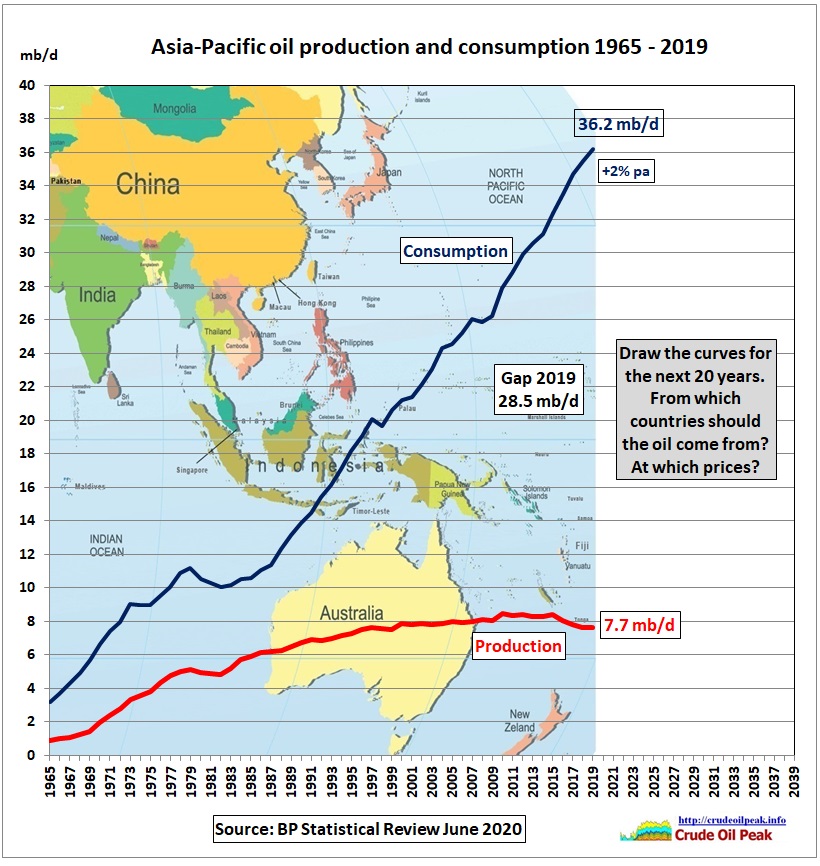
Fig 1: Asian oil consumption is around 5 times higher than production
The production decline after the peak in 2015 is very modest. The size of the gap between consumption and production is mainly determined by consumption growth rather than by production decline. Will the Corona virus stop the gap growing?
Let’s have a look at which Asian countries consumed how much oil over the years

Fig 2: Asian oil consumption by country
Total Asia-Pacific oil consumption grew from 26.2 mb/d in 2009 to 36.2 mb/d in 2019 or by 10 mb/d This is net growth consisting of 11.6 mb/d gross growth (out of which 5.8 mb/d in China and 2 mb/d in India) and 1.6 mb/d gross decline (600 kb/d in Japan).
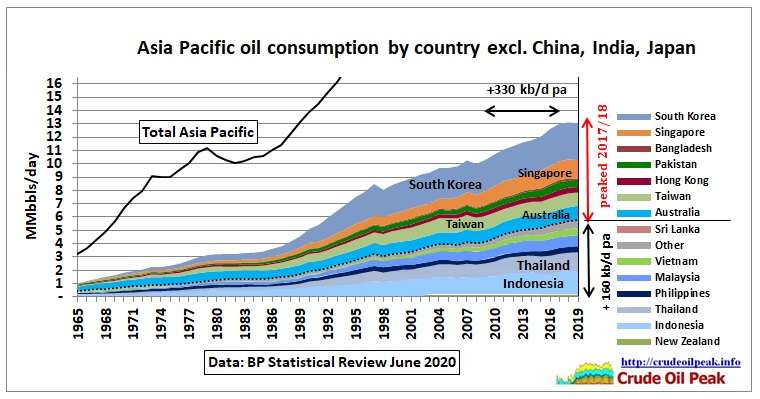
Fig 3: Subgroup with different trends
The subgroup in Fig 3 grew oil consumption at 330 kb/d pa after 2009 until 2017. Then countries above the dotted line (7.2 mb/d in 2019) peaked while the other countries below the dotted line (5.8 mb/d in 2019) continued to grow at 160 kb/d. The net effect was a flat oil consumption for 3 years.

Fig 4: Asia Pacific consumption by fuel
We see how important Diesel is. Fuel oil use is much lower than before the 2nd oil crisis in 1979. Naphta and other fuels are mainly used in the chemical industry.
Asian oil consumption growth is dominated by China and India.
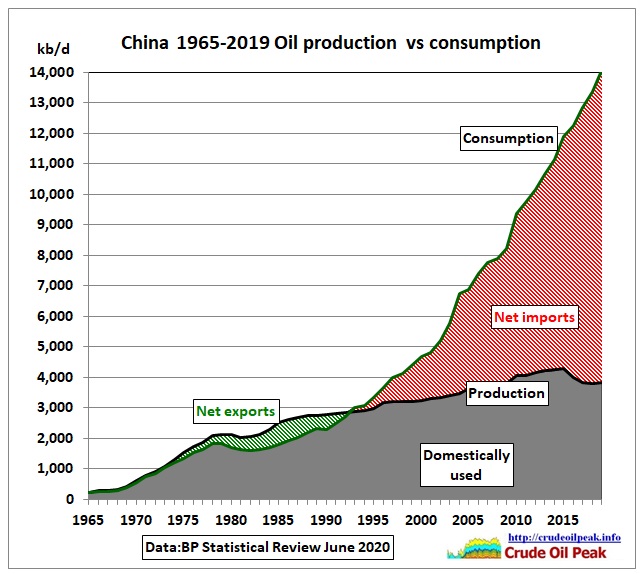
Fig 5: Peak oil in China
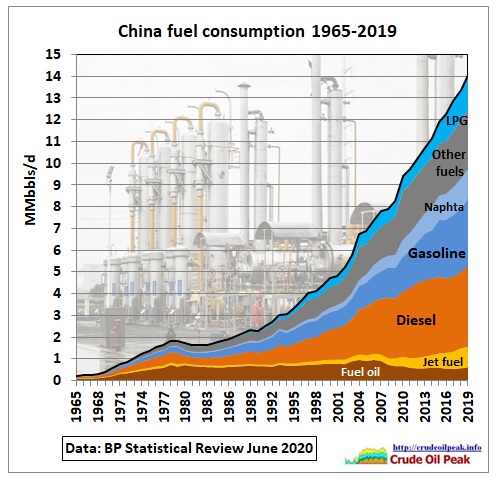
Fig 6: China fuel consumption by type
While recent consumption curves in the above graphs look quite smooth, annual changes reveal a more complex picture with varying growth and even decline rates over time and in different countries.
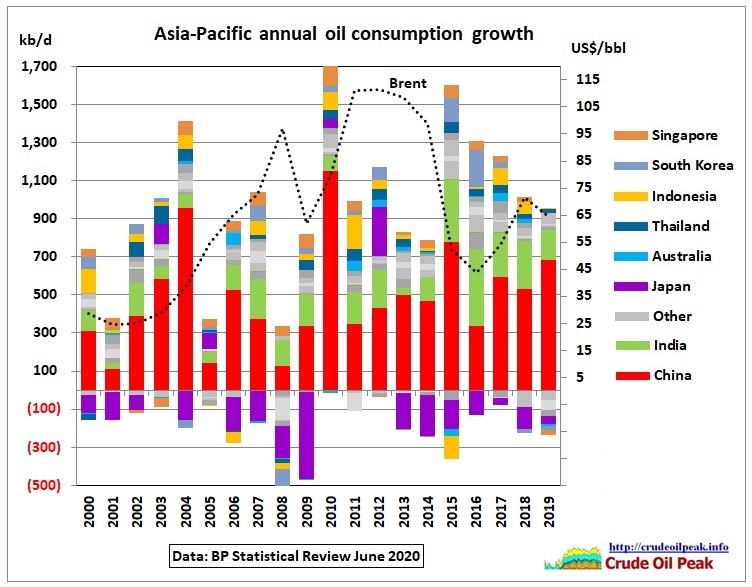
Fig 7: Asian oil consumption growth and decline (gross)
In the last 5 years gross growth came down from 1.6 mb/d to 950 kb/d, dominated by China and India.
China’s oil consumption grew by a whopping 1.1 mb/d in 2010 as a result of a 2009/10 stimulus package amounting to almost 6% of GDP (estimated at RMB 2 Tr). https://treasury.gov.au/publication/chinese-macroeconomic-management-through-the-crisis-and-beyond/2011-01-chinese-macroeconomic-management-through-the-crisis-and-beyond/4-chinas-stimulus-package
…click on the above link to read the rest of the article…
Europe must prepare for life after oil
Europe must prepare for life after oil
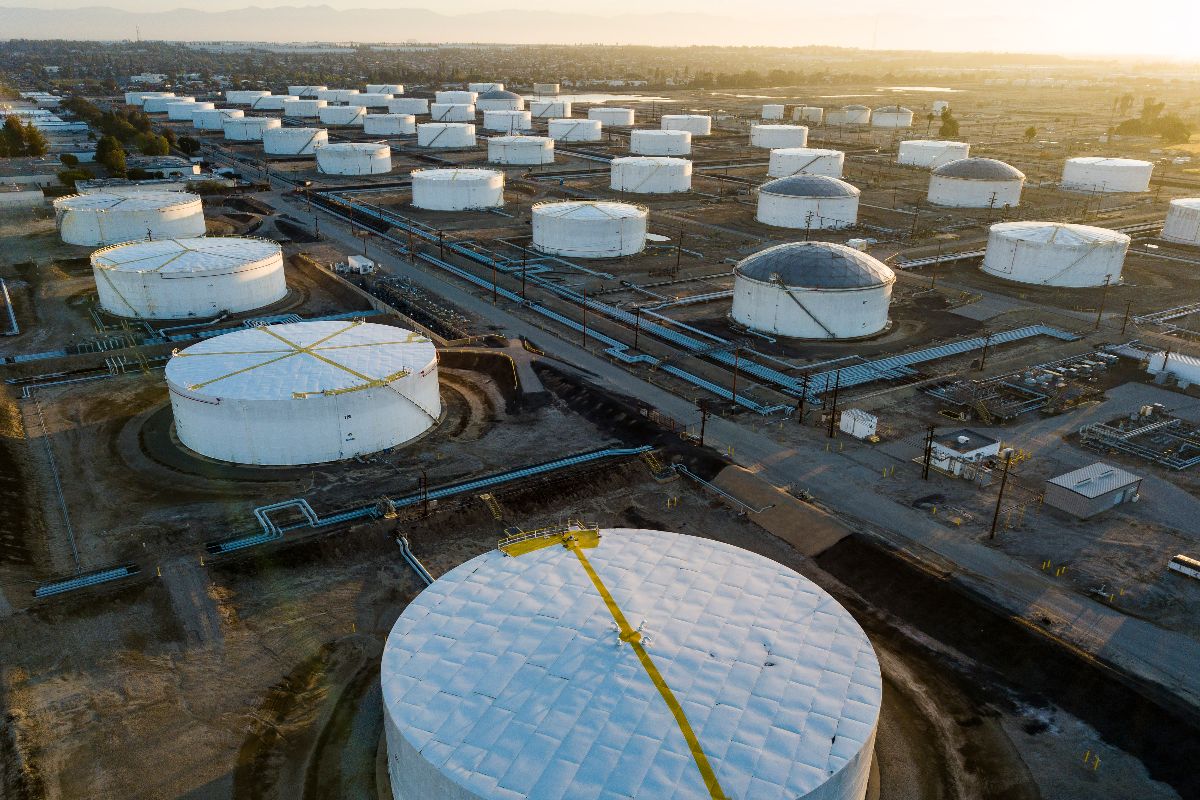
The COVID-19 pandemic is forcing us to leave the fossil fuel era behind. Europe needs to begin preparing for what comes next.
Oil prices have crashed. The most visible cause has been the measures taken to contain the COVID-19 pandemic, which have triggered record lows in global oil demand.
Yet the crisis also exposes structural vulnerabilities in our fossil fuel-dependent economic system, which requires us to rapidly transition to an alternative energy system if we are to avert economic collapse.
The most important scientific concept to assess and understand these vulnerabilities is ‘Energy Return on Investment’ (EROI) – the foundation of the emerging discipline of biophysical economics. EROI is designed to measure how much energy is needed to extract energy from a particular resource. What’s left is known as surplus ‘net energy’, used to support goods and services in the economy outside the energy system. The higher the ratio, the more surplus energy is left for the economy. That surplus is running increasingly thin.
In the early 20th century, the EROI of fossil fuels was sometimes as high as 100:1: a single unit of energy would be enough to extract a hundred times that amount. But since then, the EROI of fossil fuels has gone down dramatically[1], as we are extracting fossil fuels from places that are increasingly difficult to reach. Between 1960 and 1980, the world average value EROI for fossil fuels declined[2] by more than half, from about 35:1 to 15:1. It’s still declining[3]: latest estimates put the value at between 6:1 and 3:1.
The decline of fossil fuels’ EROI has acted as a background ‘brake’ on the rate of economic growth for the world’s advanced industrial economies, which has been slowing down[4] since the 1970s.
…click on the above link to read the rest of the article…
Nuclear waste will last a lot longer than climate change
Nuclear waste will last a lot longer than climate change
Preface. One of the most tragic aspects of peak oil is that it is very unlikely once energy descent begins that oil will be expended to clean up our nuclear mess. Or before descent either. Anyone who survives peak fossil fuels and after that, rising sea levels and extreme weather from climate change, will still be faced with nuclear waste as a deadly pollutant and potential weapon.
According to Archer (2008): “… there are components of nuclear material that have a long lifetime, such as the isotopes plutonium 239 (24,000 year half-life), thorium 230 (80,000 years), and iodine 129 (15.7 million years). Ideally, these substances must be stored and isolated from reaching ground water until they decay, but the lifetimes are so immense that it is hard to believe or to prove that this can be done”.
Below are summaries of two articles on nuclear waste.
***
Ro, C. 2019. The Staggering Timescales Of Nuclear Waste Disposal. Forbes.
This most potent form of nuclear waste needs to be safely stored for up to a million years. Yet existing and planned nuclear waste sites operate on much shorter timeframes: often 10,000 or 100,000 years. These are still such unimaginably vast lengths of time that regulatory authorities decide on them, in part, based on how long ice ages are expected to last.
Strategies remain worryingly short-term, on a nuclear timescale. Chernobyl’s destroyed reactor no. 4, for instance, was encased in July 2019 in a massive steel “sarcophagus” that will only last 100 years. Not only will containers like this one fall short of the timescales needed for sufficient storage, but no country has allotted enough funds to cover nuclear waste disposal. In France and the US, according to the recently published World Nuclear Waste Report, the funding allocation only covers a third of the estimated costs. And the cost estimates that do exist rarely extend beyond several decades.
…click on the above link to read the rest of the article…
Impact of Corona Virus similar to some earlier peak oil scenarios
Impact of Corona Virus similar to some earlier peak oil scenarios
Empty roads, grounded aircraft, falling tourist and international student numbers, plunging car sales, empty super market shelves, disrupted supply chains…

Fig 1: Empty roads in Wuhan in February 2020
China Car Sales Slump 92% in First Half of February on Virus
21 Feb 2020
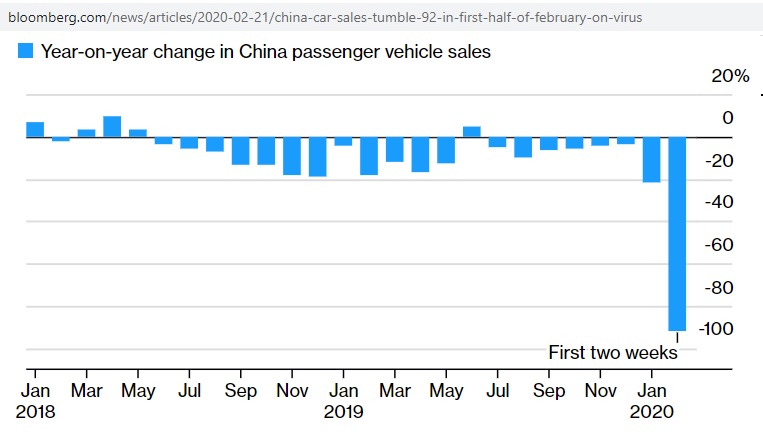
Fig 2: Chinese car sales were down since June 2018
That all sounds like peak oil has hit except that oil prices are low now. Which may change of course as low oil prices may mean that US shale oil is likely to peak earlier than otherwise would have been the case.
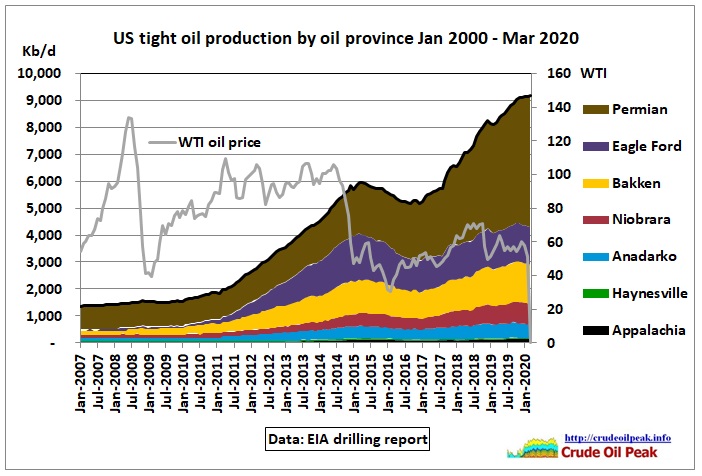
Fig 3: US tight oil production
https://www.eia.gov/petroleum/drilling/
The graph shows that tight oil production took off when oil prices were around $100/barrel but peaked in March 2015 and then declined as oil prices dropped to $50/barrel. Production started to recover in September 2016 but almost half of the production (mainly from Bakken, Eagle Ford, Niobrara and Aanadako) has already peaked again in October 2019 and in March 2020 is estimated to be just 240 kb/d higher than the 2015 peak. The other half of the production, from the Permian (Texas) is still growing but monthly growth rates have declined from 180 kb/d in mid 2018 to 40 kb/d now. Recent data are preliminary.
Coronavirus Delivers Another Blow to Embattled Shale Drillers
29 Feb 2020
Frackers already faced financial woes in 2020, even before the virus threatened oil demand
Shale drillers were already braced for a tough year. Now the new coronavirus is putting them under even greater financial pressure.
Exploration and production companies are straining to slow growth—amid an oversupply of oil and gas—and cut spending to appease investors angry over poor returns. Now the virus has further weakened global demand for their products, posing a greater challenge to a sector where many companies are saddled with debt.
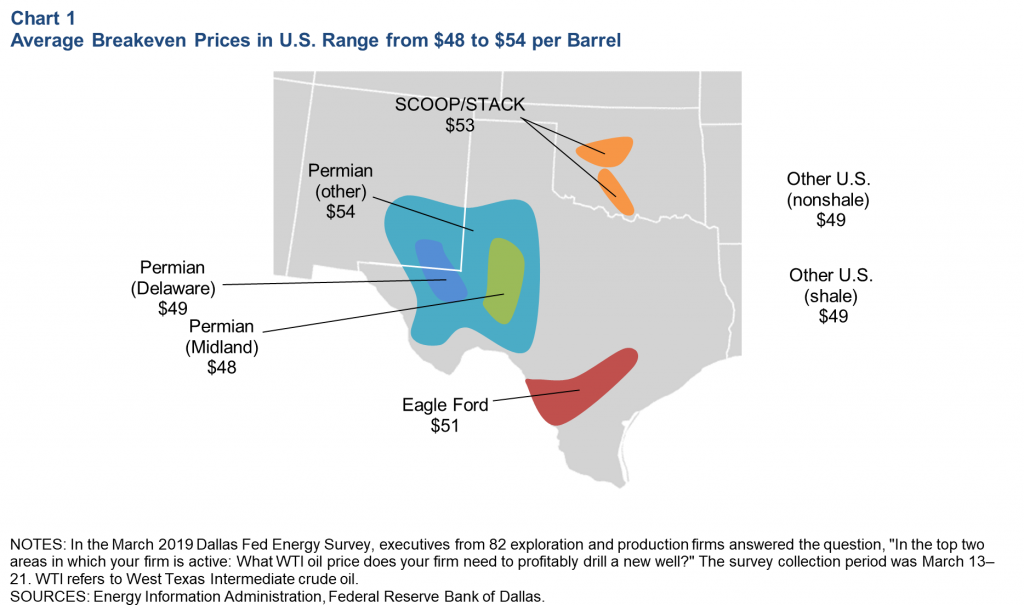
Fig 4: Breakeven oil prices in the US
…click on the above link to read the rest of the article…
Will covid-19 delay peak oil?
Will covid-19 delay peak oil?
With global demand having fallen by about 29 million barrels per day from a year ago, it seems like this pandemic might delay peak oil production while the pandemic and consequent depression lasts, since so much less oil is being consumed. Since storage is getting full, many oil producers are being forced to shut down wells, since there’s nowhere to put the oil or demand for it.
Shut down wells may produce less oil after being restarted
Shutting in wells can reduce oil production when restarted, but that doesn’t happen every time. Sometimes you get lucky. More often though, the sub-surface gremlins in the reservoirs are going to get you. The net effect will likely be less oil and gas than there was before.
With prices so low and storage so full, some producers are shutting down wells. But the problem with that is it can have long term consequences, damaging the reservoir so that in the future not all of the oil can be produced (Brower 2020).
In addition to reservoir problems, especially tar sands, conventional and other wells face restart issues with the pipes, valves, separators, pumps, pipelines, older wells, and so many other technical problems that at least about 10-20% plus a loss of ability to reopen marginal projects. Depending how the game is played by the industry, the damage can be twice that, easily, especially in offshore and ultra-deep offshore wells, where methane hydrates will form immediately in seafloor pipelines and plug them. These wells could be 100 times more difficult to restart than a shale well (Patzek 2020).
Operations in the Gulf of Mexico will likely shut last, since the miles of pipelines that carry the oil along the sea floor to processing facilities on shore can clog if shut off for too long.
…click on the above link to read the rest of the article…
Impact of Corona Virus similar to some earlier peak oil scenarios
Impact of Corona Virus similar to some earlier peak oil scenarios
Empty roads, grounded aircraft, falling tourist and international student numbers, plunging car sales, empty super market shelves, disrupted supply chains…

China Car Sales Slump 92% in First Half of February on Virus
21 Feb 2020

That all sounds like peak oil has hit except that oil prices are low now. Which may change of course as low oil prices may mean that US shale oil is likely to peak earlier than otherwise would have been the case.

https://www.eia.gov/petroleum/drilling/

The graph shows that tight oil production took off when oil prices were around $100/barrel but peaked in March 2015 and then declined as oil prices dropped to $50/barrel. Production started to recover in September 2016 but almost half of the production (mainly from Bakken, Eagle Ford, Niobrara and Aanadako) has already peaked again in October 2019 and in March 2020 is estimated to be just 240 kb/d higher than the 2015 peak. The other half of the production, from the Permian (Texas) is still growing but monthly growth rates have declined from 180 kb/d in mid 2018 to 40 kb/d now. Recent data are preliminary.
Coronavirus Delivers Another Blow to Embattled Shale Drillers
29 Feb 2020
Frackers already faced financial woes in 2020, even before the virus threatened oil demand
Shale drillers were already braced for a tough year. Now the new coronavirus is putting them under even greater financial pressure.
Exploration and production companies are straining to slow growth—amid an oversupply of oil and gas—and cut spending to appease investors angry over poor returns. Now the virus has further weakened global demand for their products, posing a greater challenge to a sector where many companies are saddled with debt.
…click on the above link to read the rest of the article…
Many signs of peak oil and decline
Many signs of peak oil and decline

Preface. Recently the IEA 2018 World Energy Outlook predicted an oil crunch could happen as soon as 2023. Oil supermajors are expected to have 10 years of reserve life or more, Shell is down to just 8 years.
Political shortages are as big a problem as geological depletion. At least 90% of remaining global oil is in government hands, especially Saudi Arabia and other countries in the middle east that vulnerable to war, drought, and political instability.
And in 2018, the U.S. accounted for 98% of global oil production growth and since 2008, the U.S. accounted for 73.2% of the global increase in production (see Rapier below). What really matters is peak diesel, which I explained in “When trucks stop running”, and fracked oil has very little diesel, much of it is only good for plastics, and yet America may well be the last gasp of the oil age if production isn’t going up elsewhere.
Related
2019. When will ‘peak oil’ hit global energy markets? dw.com. Darren Woods, CEO of ExxonMobil predicts a 25% rise in global energy demand for the next two decades, due to “global demographic and macroeconomic growth trends. When you factor in depletion rates, the need for new oil grows at 8% a year,” he told analysts in March.
***
Clearly the depth of wells we need to drill show we are reaching peak oil production: 2019-11-19 The Truth About The World’s Deepest Oil Well
How deep into the ground do we have to go to tap the resources we need to keep the lights on? How deep into the ground are we able to go?
The first oil well drilled in Texas in 1866 was a little over 100 feet deep: the No 1 Isaac C. Skillern struck oil at a depth that, from today’s perspective, is ridiculously shallow.
…click on the above link to read the rest of the article…
After peak oil we need small family farms. But U.S. farms are getting even bigger
After peak oil we need small family farms. But U.S. farms are getting even bigger
Preface. Oh dear, wrong direction! Eventually 75 to 90% of Americans will need to be farmers to feed their family and support craftsmen and others in towns, just as it always was before fossil fuels arrived. These big farms are more dependent on fossils than smaller farms as well. I would hate to see them survive peak oil, because that would mean most people would become peasant/slaves rather than owning their own land.
***
Weinraub, M. 2019. Size matters. Big U.S. farms get even bigger amid China trade war. finance.yahoo.com
HAZELTON, N.D. (Reuters) – As the 2018 harvest approached, North Dakota farmer Mike Appert had a problem – too many soybeans and nowhere to put them. Selling was a bad option. Prices were near decade lows as U.S. President Donald Trump’s trade war with China weighed heavily on the market. Temporary storage would only buy him a little bit of time, particularly in an area where cold weather can damage crops stored in plastic bags.
So Appert, who farms 48,000 acres (19,425 hectares), cut a check for $800,000 to build eight new permanent steel bins. That allowed him to hold onto his bumper crop and wait for prices to recover.
He sold half of the 456,000 bushels stored on his farm throughout the following summer, earning about $1 more per bushel and avoiding storage at nearby CHS elevators or an Archer Daniels Midland Co. <ADM.N> processor in the area.
But most farmers do not have $800,000 to spend on steel bins, and many are going under. The number of U.S. farms fell by 12,800 to 2.029 million in 2018, the smallest ever, as the trade war pushes more farmers into retirement or bankruptcy.
Roger Hadley, who farms 1,000 acres in Indiana, was unable to plant any corn and soybeans this year after heavy rains added to farmers’ woes.
…click on the above link to read the rest of the article…
Many signs of peak oil and decline
Many signs of peak oil and decline

Preface. Recently the IEA 2018 World Energy Outlook predicted an oil crunch could happen as soon as 2023. Oil supermajors are expected to have 10 years of reserve life or more, Shell is down to just 8 years.
Political shortages are as big a problem as geological depletion. At least 90% of remaining global oil is in government hands, especially Saudi Arabia and other countries in the middle east that vulnerable to war, drought, and political instability.
And in 2018, the U.S. accounted for 98% of global oil production growth and since 2008, the U.S. accounted for 73.2% of the global increase in production (see Rapier below). What really matters is peak diesel, which I explained in “When trucks stop running”, and fracked oil has very little diesel, much of it is only good for plastics, and yet America may well be the last gasp of the oil age if production isn’t going up elsewhere.
Related articles:
2019-6-10 World crude production outside US and Iraq is flat since 2005
***
Rapier, R. 2019. The U.S. accounted for 98% of global oil production growth in 2018. Forbes.
Earlier this month BP released its Statistical Review of World Energy 2019. The U.S. extended its lead as the world’s top oil producer to a record 15.3 million BPD (my comment: minus 4.3 million BPD natural gas liquids, which really shouldn’t be included since they aren’t transportation fuels). In addition, the U.S. led all countries in increasing production over the previous year, with a gain of 2.18 million BPD (equal to 98% of the total of global additions),… which helped offset declines from Venezuela (-582,000 BPD), Iran (-308,000 BPD), Mexico (-156,000 BPD), Angola (-143,000 BPD), and Norway (-119,000 BPD).
Peak demand? Hardly: “the world set a new oil production record of 94.7 million BPD, which is the ninth straight year global oil demand has increased.
Fickling, D. 2019. Sunset for Oil Is No Longer Just Talk. Bloomberg.
…click on the above link to read the rest of the article…
Peak oil in Asia: where will the oil come from for the Asian Century?
Peak oil in Asia: where will the oil come from for the Asian Century?
Asian oil production peaked above 8 mb/d for the period between 2008 and 2016 (with spikes in 2010 and 2015). The 2015 peak was mainly caused by peak oil in China. Since then Asia’s decline was almost 800 kb/d or 9%.
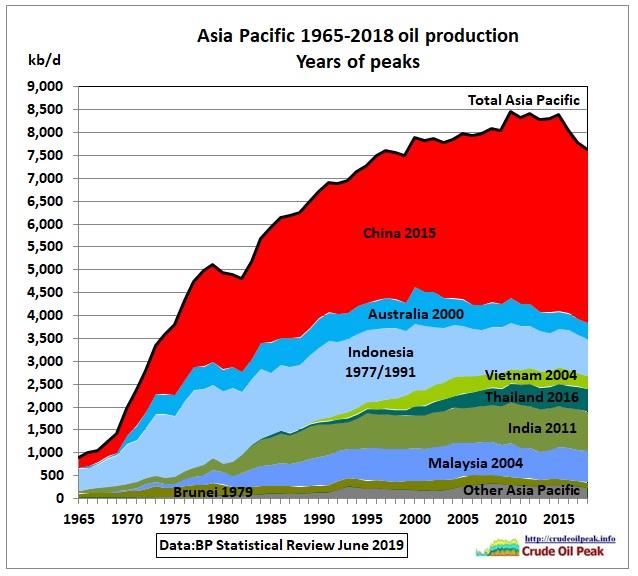
The rest of Asia peaked already in 2000 (the year Australia peaked) followed by a very modest decline of 1.1% pa. Let’s go through the countries one by one.
In the following, net oil imports are defined as the difference between oil consumption and production. Please see the note at the end of this post.
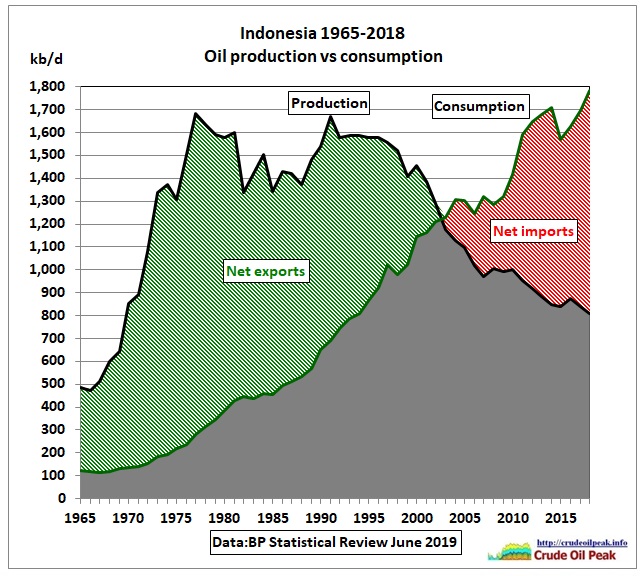
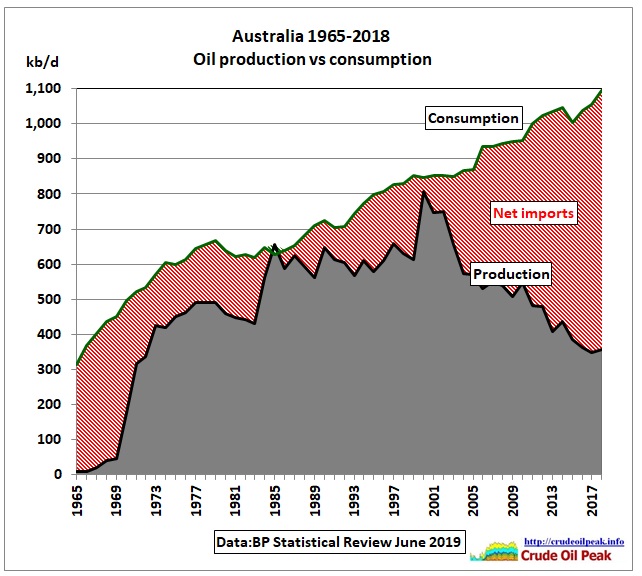

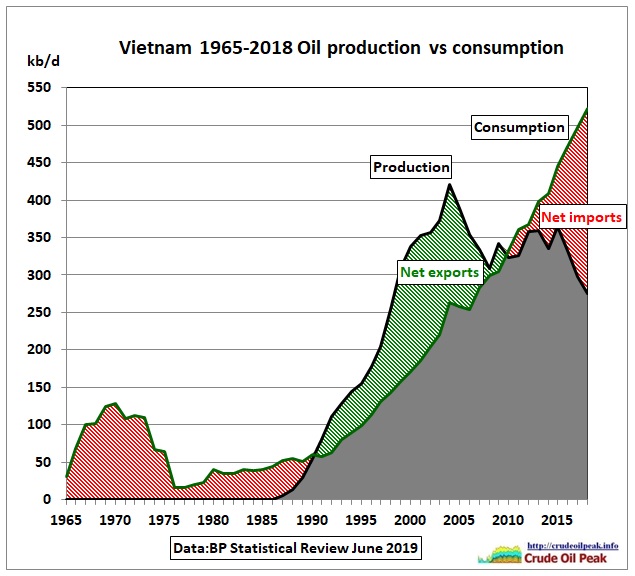

Thailand’s consumption increases faster than production.
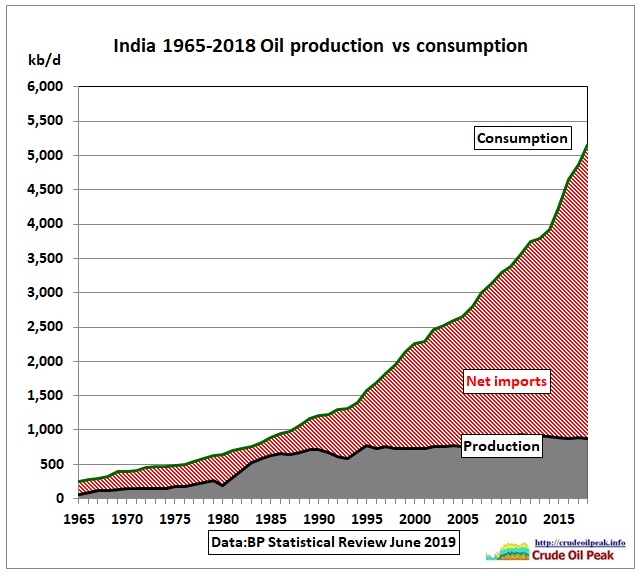
…click on the above link to read the rest of the article…
Global Economic Growth In Serious Trouble When U.S. Shale Oil Peaks & Declines
Global Economic Growth In Serious Trouble When U.S. Shale Oil Peaks & Declines
The global economy would be in serious trouble if it weren’t for the rapid growth of U.S. shale oil production. Since the 2008 financial crisis, U.S. shale oil production has increased by more than 6 million barrels per day. Without these additional barrels of oil, the massive money printing and asset purchases by the central banks would not have been as successful in propping up the economy and markets.
We must remember this simple fact; energy drives the markets, not finance. Finance steers the market. So, for the economy to expand, there must be oil production growth. However, it would be unwise for the market-economy to rely upon the U.S. shale industry as the leading driver of global oil production growth for the foreseeable future.
Why? Well, there are several reasons, but let’s first look at how much the increase in U.S. shale oil production has accounted for the rise in global oil supply since 2008. Of the 9.6 million barrels per day (mbd) of global oil production growth 2008-2017, the United States supplied two-thirds or 6.3 mbd of the total:

Interestingly, global oil production minus the United States and Canada didn’t increase in 2009, 2010 or 2011. There was a small bump up in 2012 and finally by 2105-2017 did global oil production minus the U.S. and Canada increase by 1.7 mbd. Now, let me repeat that. If we add up ALL THE OTHER COUNTRIES in the world producing oil, the net increase from 2008 to 2017 was only 1.7 mbd. Thus, of the total 9.6 mbd of global oil production growth 2008-2017, the U.S. (6.3 mbd) and Canada (1.6 mbd) accounted for 82% of the total.
…click on the above link to read the rest of the article…
Australian Fuel Security Review ignores peak oil in China 2015 (part 3)
Australian Fuel Security Review ignores peak oil in China 2015 (part 3)
Australia increased its internal oil dependency & vulnerability
Let’s summarize what we covered in part 1 and 2
- Australian oil production peaked in the year 2000 while oil consumption is going up relentlessly
- 3 Australian refineries closed, resulting in fuel imports dramatically increasing, mainly from South Korea and Japan. This is a big problem if there is a military conflict in the South China Sea
- Australia’s emergency oil stock is only 60% of IEA requirements since 2014. The government has no firm plans to improve this situation
- Asian oil production started to peak in 2010 while consumption is still going up
- China’s oil production started to decline after 2015. Oil imports are now around 10 mb/d. No one really knows where China will import its oil from in the next 5-10 years, not to mention in the next decades
- China’s maritime silk road project is to be seen as securing China’s oil import routes
- Asia imports around 16 mb/d from the Middle East, making it highly vulnerable to the next ME war
- US shale oil will peak in a yet unknown year, but it will peak due to extraordinarily high decline rates
- The Fuel Security Review argues that the global oil industry will always solve problems of supply disruptions and return to business as usual. This is an untested assumption because there will be fierce competition as Asia has entered the era of peak oil.
So what should Australia have done to prepare for this change? It should have REDUCED its oil use by
- developing alternative transport fuels and building up associated infrastructure
- introducing bio-fuels for sole use in agricultural production and for transport of food to the cities
- electrifying rail: intercity, freight and urban rail including expanding and modernising manufacturing capacities for rolling stock and other rail equipment
- NOT planning and building additional oil dependent infrastructure like freeways, road tunnels and airports
…click on the above link to read the rest of the article…
Australian Fuel Security Review ignores peak oil in China 2015 (part 2)
Australian Fuel Security Review ignores peak oil in China 2015 (part 2)
Coming back to the 2019 Liquid Security Review
https://www.environment.gov.au/energy/liquid-fuel-security-review-consultation
Figures 9-11 in part 1 show how dependent Australia has become on fuel imports from South Korea and Japan, even China. The Review is aware of this, as shown on this map:
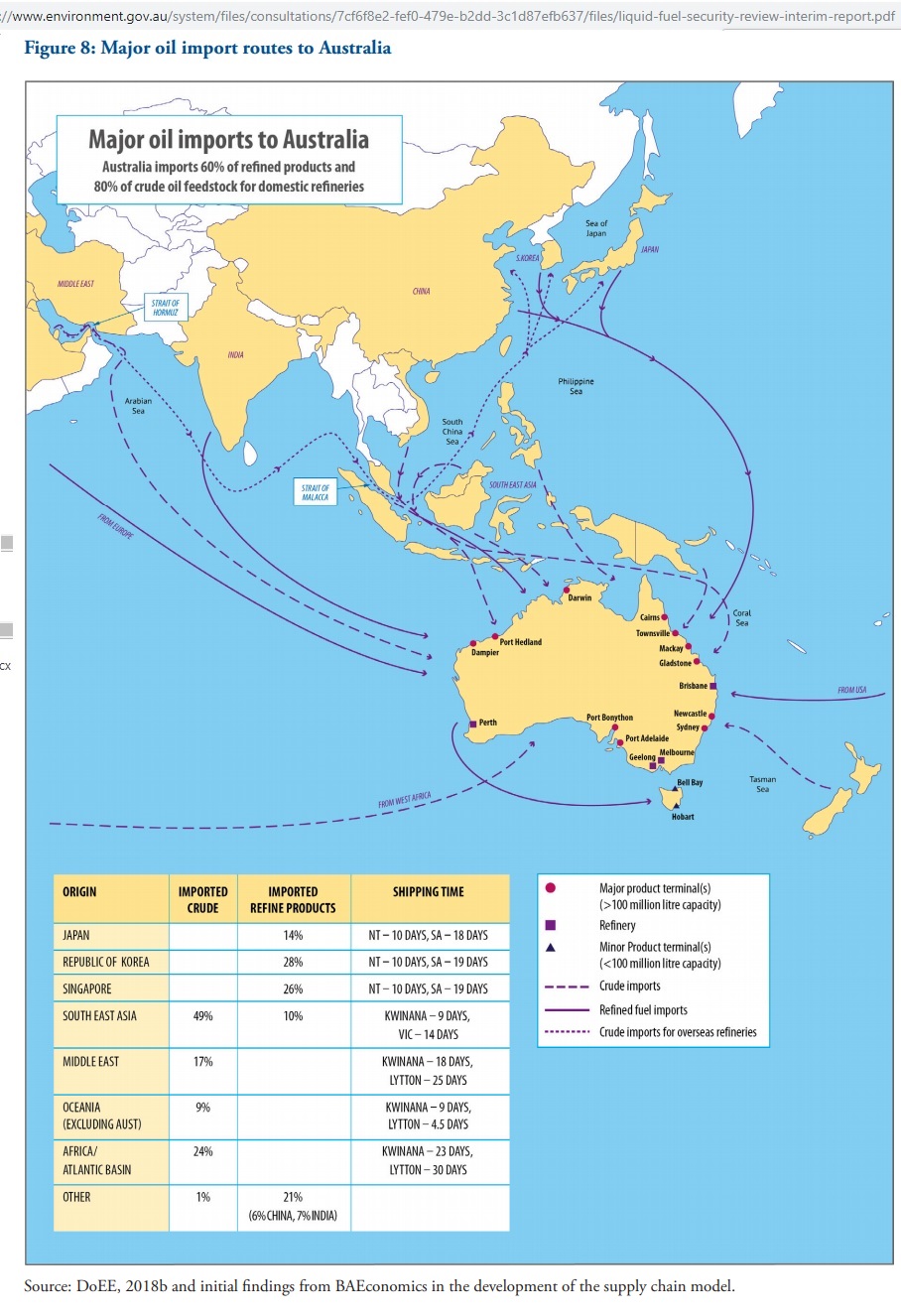
Note that any military confrontation in the South China Sea would necessitate the re-routing of crude supplies from the Middle East to South Korea and Japan via the Strait of Lombok (East of Bali) or – in the worst case – the Bass Strait as shown on this sketch map of the Centre of Strategic and International Studies (Washington):
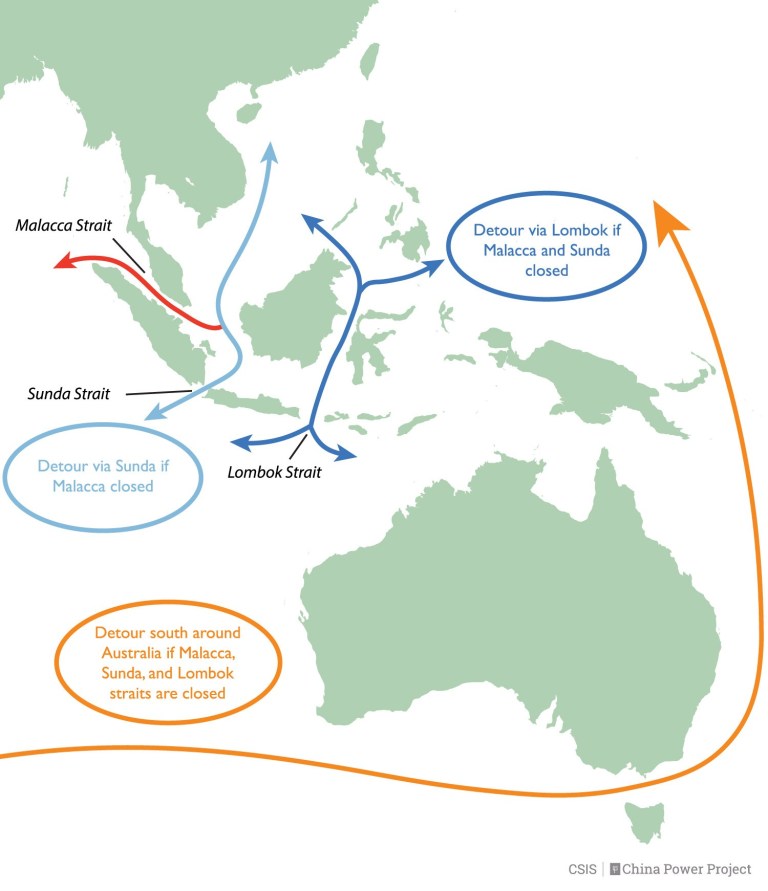
https://chinapower.csis.org/much-trade-transits-south-china-sea/
Similar detours will be necessary if there is a military confrontation in the Taiwan Strait or around the Korean peninsula. Although tensions have eased, the North Korean problem has not been solved. Particularly vulnerable is the refining complex in Ulsan because of its size.
Conflicts are more likely because Asian oil production has peaked and oil demand is growing:
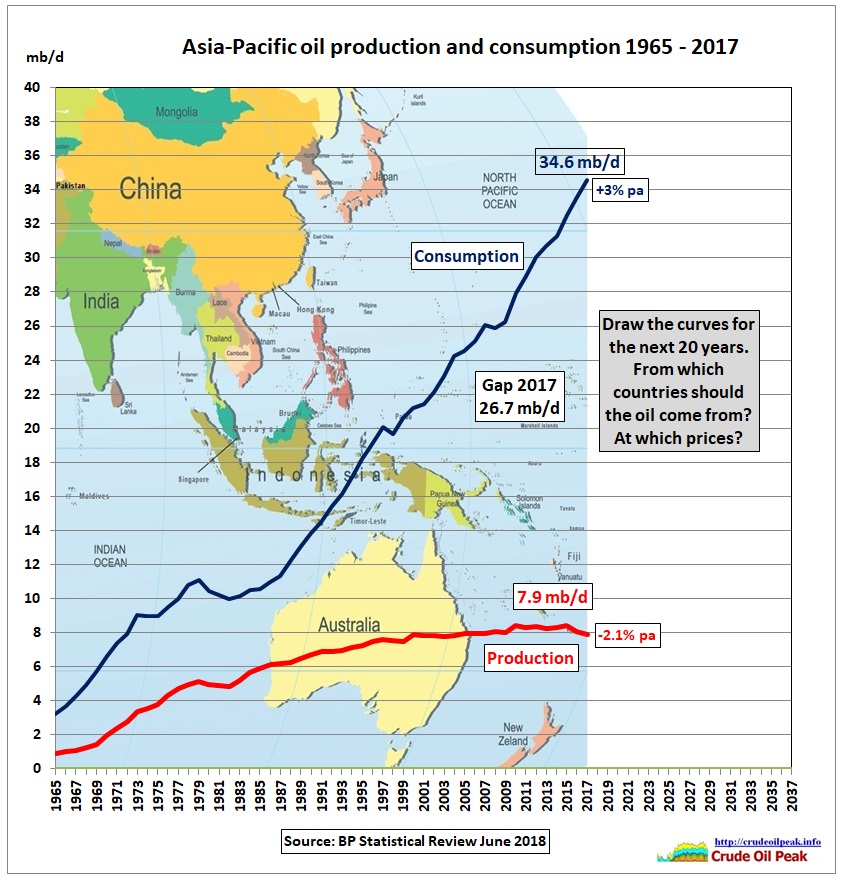
More details are in following posts:
15/8/2018 Peak oil in the Asia Pacific (part 3)
http://crudeoilpeak.info/peak-oil-in-the-asia-pacific-part-3
12/8/2018 Peak oil in China and the Asia Pacific (part 2)
http://crudeoilpeak.info/peak-oil-in-china-and-the-asia-pacific-part-2
18/6/2018 Peak oil in Asia Pacific (part 1)
http://crudeoilpeak.info/peak-oil-in-asia-pacific-part-1
Asia imports around 16 mb/d from the Middle East, not sufficient for its growing demand. Increasing imports now also come from Africa, South and Central America and the Former Soviet Union (FSU)
…click on the above link to read the rest of the article…





